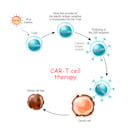
Stroke Awareness: Act F.A.S.T.
May is American Stroke Month, designed to provide awareness. Considering that five out of six people are unable to name the three signs signifying a stroke, it seems an ideal time to go over the basics. Below are tips and information you can share with your patients and use in your daily practice.
Time is of the essence when it comes to stroke, which makes The National Stroke Association’s Stroke Awareness Campaign even more poignant. The Association uses the acronym F.A.S.T. to help the public recognize the signs and symptoms of stroke:
- F = FACE Ask the person to smile. Does one side of the face droop?
- A = ARMS Ask the person to raise both arms. Does one arm drift downward?
- S = SPEECH Ask the person to repeat a simple sentence. Does the speech sound slurred or strange?
- T = TIME If you observe any of these signs (independently or together), call 9-1-1 immediately.
The Facts on Strokes
- Approximately 133,000 people will die annually from strokes. Stroke is the leading cause of long-term adult disability.
- Strokes occur every 40 seconds and take a life every four minutes.
- African Americans have twice the risk of whites; women are more at risk than men and women are twice as likely to die from stroke as breast cancer.
- The annual cost of a stroke is estimated to be more than $70 billion dollars.
Types of Strokes
There are two types of stroke, ischemic and hemorrhagic. Ischemic strokes, where a blockage of a brain blood vessel occurs, are the most common type (87%). Although they are rarer, hemorrhagic strokes (13%), account for more than 30% of all deaths from stroke.
Stroke is a BRAIN ATTACK. Every minute vital blood flow and oxygen are withheld from the brain, two million brain cells die. In order to reduce the risk of death and disability, you must act quickly. Use F.A.S.T. to recognize the symptoms of stroke and call for help. Strokes that are recognized and treated within a 3-hour window offer the best chance at positive patient outcomes.
Though one cannot stop a stroke from happening, the risk can be minimized. Knowing your medical and lifestyle stroke risk factors can help to minimize mortality and morbidity outcomes. Consider the questions below:
Stroke Risk Factors
- Have you had a previous TIA or stroke?
- Do you have uncontrolled high blood pressure or hypertension?
- Do you have undiagnosed atrial fibrillation or carotid artery disease?
- Do you have undiagnosed diabetes mellitus?
- Are your cholesterol levels above normal?
- Do you smoke?
- Are you overweight?
- Do you drink more than one alcoholic beverage a day?
If you answered “yes” to any of the above questions, you owe it to yourself and your loved ones to take the necessary steps to lower your stroke risk.
"Time Is Brain"
Remember, the next time you suspect someone is experiencing a stroke, use F.A.S.T. and call 9-1-1. You can make a difference in the outcome.
To learn more about stroke, visit the RN.comCE course, Stroke Prevention and Recognition.
References:
- National Stroke Association. (2014). Stroke 101 fact sheet. Retrieved from here
- StokeAwareness.com (n.d) Signs and symptoms (n.d) Retrieved from here.
© 2015. AMN Healthcare, Inc. All Rights Reserved.
Biography:
Dr. Miller-Hoover is a certified Acute and Critical Care Pediatric Clinical Nurse Specialist and has worked in nursing for more than 30 years. Her nursing career has taken her from the bedside, to education and leadership in critical care units where she has cared for patients of all ages. Dr. Miller-Hoover is a published author in peer-reviewed nursing journals and has been accepted for various poster and podium presentations at national conferences.




